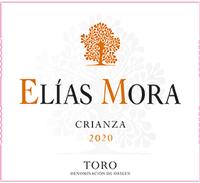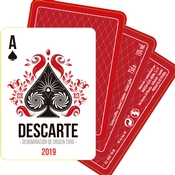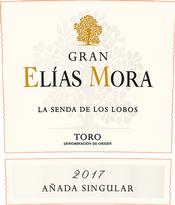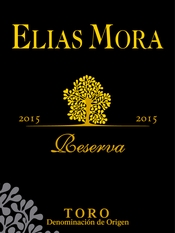Those of us who not only enjoy drinking wine but also learning about it proceed in pretty much the same way. First, we try a few wines that are not only delicious but also interesting. Second, we broaden out from our initial interest to learn about wines made from other grape varieties, or maybe learn what our “first love” grapes taste like when grown in other locations around the world. Either way, it is natural to progress “from the top down,” beginning with entire nations like France or Italy, then moving down to particular regions, and finally—for the more ardent learners among us—down to the level of particular producers. That’s a natural progression, but the sad fact is that many wine consumers never progress to that last stage. This fact is sad because the real locus of quality in wine is at the level of producers rather than regions, much less entire countries.
Spain provides a case in point. When I started studying wine, Rioja was the proverbial “800 Pound Gorilla” of Spanish wine, as Sherry was declining, and all other regions were “upstarts” with uncertain futures. Nobody knew which regions would take off or stall out, and these included Navarra, Priorat, Toro, Ribera del Duero, and a few others. As things turned out, the region that “took off” was Ribera del Duero, at least if you measure “takeoff” by the number of wineries constructed and vineyard acres planted. But that turns out to be a notably imperfect measure, as Ribera del Duero now turns out a lot of pretty ordinary wines, though I hasten to add that it also produces some truly extraordinary ones. By the same imperfect measure, Toro seems like a bit of a loser, as far fewer wineries were erected, and plantings never really boomed.
However, a good question to raise at this point would be: “Who cares”? Regions don’t make wine—vineyards and wineries make wine. Sure, a region needs promising soils and microclimates to make good wine, but within any and all regions, that promise is only fulfilled by those who tend their vineyards meticulously and make wines in their wineries skillfully. Toro didn’t enjoy a takeoff similar to that of Ribera del Duero, but that seems like a matter of virtually no consequence when you taste a superb lineup of wines from a truly meticulous and skillful producer based there. And if you want to do that, try the wines from Bodegas Elías Mora.
I’ve traveled to Spain to learn about the country’s wines about 25 times since I started studying, and have been to Toro on three occasions, but never to Bodegas Elías Mora. That lets you know that I haven’t been charmed by the place or its owner—just ever more impressed by the wines. I’m fortunate to taste them every year as press samples, and though vintages obviously differ from year to year, the wines seem to continue on a trajectory of consistent improvement. They are now truly excellent at every price level, meriting the attention of any serious wine lover at whatever level seems affordable.
I want to lure you toward the wines by focusing this column on the current releases, but just a bit of background is in order. The owner and winemaker is Victoria Benvenides, who founded the bodega in the year 2000, naming it after

the former owner of the vineyard, Elías Mora. That first act seems telling, at least to me, and you should ask yourself: When was the last time you heard of a wine company that was named after a person other than the proprietor? In a world full of ostentatious wineries, such an act of modesty, respect, and continuity with the past seems especially refreshing, and also impressive in an unusual way.
All the wines are made entirely from Tinta de Toro, which is a name for the historical strain of Tempranillo that adapted to growing conditions in Toro over the course of centuries. The name is not merely a gimmick cooked up by producers in the locality. Tinta de Toro vines produce quite small berries that make particularly dark and flavorful wines, and it is worth noting that not all vines in Toro are Tinta de Toro, as some relative newcomers to the area planted higher yielding clones that were initially developed in Rioja.
The winery owns 16 hectares and controls farming before harvesting another 70 hectares (which works out in acreage to 40 and 173, respectively). Vines are “head pruned” rather than trained along wires, and this
vaso or “bush vine” growing configuration is much more labor intensive but also more appropriate for the dry and intensely sunny conditions in the area, which is essentially high desert.
That’s enough to let us turn to the wines, which are imported to the USA by Grapes of Spain and its owner, Aurelio Cabestrero. They are available through normal distribution channels in many states, and of course can also be purchased for shipping if you live in a state where that is permitted. All prices below are full suggested retail, so you shouldn’t need to pay more, but may be able to find some of the wines for less:
Viñas Tinto 2021 ($28): This is the only wine reviewed in this set that I didn’t taste alongside all the others. I opened this along with several other roughly

comparable reds, including one from another producer in Toro that I esteem highly, and this was clearly the most complete and enjoyable wine in the group. It is made from relatively young vines averaging 20 years in age—but only “young” in the context of Toro, and especially for a wine priced at this level. Regarding price, it is amazing that this was aged in 100% new oak barrels, all American ones in this case. That could have been a recipe for a coconut and vanilla disaster (two notes that lesser American cooperage can impart that I cannot abide). However, either the barrels were of high quality or the wine’s limited time in them (only 6 months) prevented those notes from resulting. What did result was a pleasantly spicy, lightly toasty edge on a core of ripe, dark berry fruit that shows excellent integration with the wood and very fine balance of all components, including acidity and tannin. This is remarkably delicious for its age and price.
91
Crianza 2019 ($40): This offering seemed surprisingly tart and acidic when the cork was first pulled, but opened up and broadened out in just a few minutes without any aeration or decanting. Still, rather astringent tannins in the wine’s

finish suggest that this needs more time in bottle to achieve a fully coherent profile. One way to test that is to try the wine again a day later, which is exactly what I did with this wine and all the others reviewed below. When re-tasted, the tannins had rounded out somewhat, but there was still clear room for improvement with aging, as the wine’s acidity was quite bright and a bit awkward in relation to the ripe sweetness of the fruit. To be clear, I would be disappointed in a $40 wine that did not show a capacity for improvement from cellaring, so this is not a knock on this wine—just advice for how to treat it. One more thing: $40 would seem like an insane price for Crianza if this were from Rioja, as that’s become a largely woeful category populated mostly by $15 wines that taste more like the inside of a barrel than like “wine.” This is from 50-year-old, own-rooted bush vines, and is an utterly different animal. It deserves cellaring, and it you don’t have the patience or space to do that, lean toward the 2018 “Descarte” from this house.
92
Descarte 2018 ($65): I’ve tasted most (maybe all) of the vintages of this wine ever imported to the USA, but don’t remember one that was quite this good. 2018 was a hot year in almost all of Europe, so the fact that the vineyard sites

used for this wine are north-facing may explain the delicious outcome. The finished wine shows very deep flavors and luxurious texture by comparison to the 2019 Crianza, with notes of ripe blackberries and Bing cherries alongside accents of cocoa and baking spices. Conspicuously concentrated but neither heavy nor overly assertive, this is wicked good wine right now. It will likely get even better, but few who taste it now will prove patient enough to find out.
94
Gran Elías Mora “La Senda de Los Lobos Añada Singular” 2017 ($90): This is a very big and powerful wine in most vintages—certainly in this one as well. Physically quite dense, it counterbalances its oak load very effectively, making the initial impression one of purity and balance. This is a singular

characteristic that makes this wine worth its asking price when judged against ultra-premium wines that also ring up for $90 or so. Its window of enjoyability is just phenomenal, and though I think it would be a mistake to open this for another five years, it will likely improve for two decades after that and hold for another decade after that. Holding it for that long will require either a bit of optimism or deep affection for your children or grandchildren, but the wine really does seem up to the challenge. Tasted again 24 hours after opening, it still showed the same need for time in bottle to absorb tannins, so either keep your mitts off this for a good while or buy the 2015 Reserva instead.
95
Reserva 2015 ($110): This is a phenomenally delicious wine, and though it will

surely improve for a decade or more, but one doesn’t need to hold it for anywhere near that long for it to be enjoyable enough to justify its asking price. Very rich and with a deep, soft core of dark fruit, this is surprisingly approachable and even charming for a wine that packs a very serious punch. The fruit is sourced entirely from 80-year-old vines in the Senda del Lobo vineyard, and deserves the 24 months of aging to which it was treated in French oak barrels. Tasted again 24 hours after it was first opened, it had neither improved nor lost any of its initial appeal, reaffirming my sense that this faces zero risk of going into decline anytime soon, but is also ready to enjoy now with robust food.
95
"Don Daniel" 2018 ($160): Only 250 cases of this wine were produced in honor of Victoria Benvenides’ father, and I’ve never seen it before, so your odds of finding a bottle without some earnest efforts are pretty slim. It offers spectacular purity of fruit on a big but stylish frame, with essentially perfect balance between the fruit’s density and the French oak’s supportive structure.

Silky texture and near-perfect integration suggest that the fruit was immaculate for starters and then treated with great care when macerated and fermented, and oak aging was only 12 months in duration—half the time of the Reserva from this house. The fruit is sourced from 50-year-old, single vineyard “La Cañadica” estate. It was absolutely marvelous when re-tasted after 24 hours—impeccable and fresh, lithe but still very expressive both aromatically and in terms of flavor, without any extraneous weight. This is substantially more expensive than anything in the Elías Mora lineup, and that always seems to exert some pressure to beef up a wine and whack it with a lot of oak so that buyers will feel like they got their money’s worth. However, my impression was that this wasn’t made with buyers in mind, but rather as an
homage, and wow…what a tribute, both to Don Daniel and also to the skill of all who tended the vines and helped craft this wine.
98